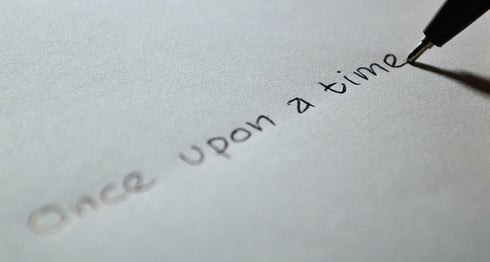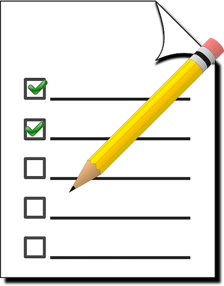What Does Introduction Mean In Writing
It's the roadmap to your essay, it's the forecast for your argument, it's...your introduction paragraph, and writing one can feel pretty intimidating. The introduction paragraph is a part of just about every kind of academic writing, from persuasive essays to research papers. But that doesn't mean writing one is easy! If trying to write an intro paragraph makes you feel like a Muggle trying to do magic, trust us: you aren't alone. But there are some tips and tricks that can make the process easier--and that's where we come in. In this article, we're going to explain how to write a captivating intro paragraph by covering the following info: Are you ready? Let's begin! An introduction paragraph is the first paragraph of an essay, paper, or other type of academic writing. Argumentative essays, book reports, research papers, and even personal essays are common types of writing that require an introduction paragraph. Whether you're writing a research paper for a science course or an argumentative essay for English class, you're going to have to write an intro paragraph. So what's the purpose of an intro paragraph? As a reader's first impression of your essay, the intro paragraph should introduce the topic of your paper. Your introduction will also state any claims, questions, or issues that your paper will focus on. This is commonly known as your paper's thesis. This condenses the overall point of your paper into one or two short sentences that your reader can come back and reference later. But intro paragraphs need to do a bit more than just introduce your topic. An intro paragraph is also supposed to grab your reader's attention. The intro paragraph is your chance to provide just enough info and intrigue to make your reader say, "Hey, this topic sounds interesting. I think I'll keep reading this essay!" That can help your essay stand out from the crowd. In most cases, an intro paragraph will be relatively short. A good intro will be clear, brief, purposeful, and focused. While there are some exceptions to this rule, it's common for intro paragraphs to consist of three to five sentences. Effectively introducing your essay's topic, purpose, and getting your reader invested in your essay sounds like a lot to ask from one little paragraph, huh? In the next section, we'll demystify the intro paragraph format by breaking it down into its core parts. When you learn how to approach each part of an intro, writing one won't seem so scary! Once you figure out the three parts of an intro paragraph, writing one will be a piece of cake! In general, an intro paragraph is going to have three main parts: a hook, context, and a thesis statement. Each of these pieces of the intro plays a key role in acquainting the reader with the topic and purpose of your essay. Below, we'll explain how to start an introduction paragraph by writing an effective hook, providing context, and crafting a thesis statement. When you put these elements together, you'll have an intro paragraph that does a great job of making a great first impression on your audience! When it comes to how to start an introduction paragraph, o ne of the most common approaches is to start with something called a hook. What does hook mean here, though? Think of it this way: it's like when you start a new Netflix series: you look up a few hours (and a few episodes) later and you say, "Whoa. I guess I must be hooked on this show!" That's how the hook is supposed to work in an intro paragraph: it should get your reader interested enough that they don't want to press the proverbial "pause" button while they're reading it. In other words, a hook is designed to grab your reader's attention and keep them reading your essay! This means that the hook comes first in the intro paragraph format--it'll be the opening sentence of your intro. It's important to realize that there are many different ways to write a good hook. But generally speaking, hooks must include these two things: what your topic is, and the angle you're taking on that topic in your essay. One approach to writing a hook that works is starting with a general, but interesting, statement on your topic. In this type of hook, you're trying to provide a broad introduction to your topic and your angle on the topic in an engaging way. For example, if you're writing an essay about the role of the government in the American healthcare system, your hook might look something like this: There's a growing movement to require that the federal government provide affordable, effective healthcare for all Americans. This hook introduces the essay topic in a broad way (government and healthcare) by presenting a general statement on the topic. But the assumption presented in the hook can also be seen as controversial, which gets readers interested in learning more about what the writer--and the essay--has to say. In other words, the statement above fulfills the goals of a good hook: it's intriguing and provides a general introduction to the essay topic. Once you've provided an attention-grabbing hook, you'll want to give more context about your essay topic. Context refers to additional details that reveal the specific focus of your paper. So, whereas the hook provides a general introduction to your topic, context starts helping readers understand what exactly you're going to be writing about You can include anywhere from one to several sentences of context in your intro, depending on your teacher's expectations, the length of your paper, and complexity of your topic. In these context-providing sentences, you want to begin narrowing the focus of your intro. You can do this by describing a specific issue or question about your topic that you'll address in your essay. It also helps readers start to understand why the topic you're writing about matters and why they should read about it. So, what counts as context for an intro paragraph? Context can be any important details or descriptions that provide background on existing perspectives, common cultural attitudes, or a specific situation or controversy relating to your essay topic. The context you include should acquaint your reader with the issues, questions, or events that motivated you to write an essay on your topic...and that your reader should know in order to understand your thesis. For instance, if you're writing an essay analyzing the consequences of sexism in Hollywood, the context you include after your hook might make reference to the #metoo and #timesup movements that have generated public support for victims of sexual harassment. The key takeaway here is that context establishes why you're addressing your topic and what makes it important. It also sets you up for success on the final piece of an intro paragraph: the thesis statement. The final key part of how to write an intro paragraph is the thesis statement. The thesis statement is the backbone of your introduction: it conveys your argument or point of view on your topic in a clear, concise, and compelling way. The thesis is usually the last sentence of your intro paragraph. Whether it's making a claim, outlining key points, or stating a hypothesis, your thesis statement will tell your reader exactly what idea(s) are going to be addressed in your essay. A good thesis statement will be clear, straightforward, and highlight the overall point you're trying to make. Some instructors also ask students to include an essay map as part of their thesis. An essay map is a section that outlines the major topics a paper will address. So for instance, say you're writing a paper that argues for the importance of public transport in rural communities. Your thesis and essay map might look like this: Having public transport in rural communities helps people improve their economic situation by giving them reliable transportation to their job, reducing the amount of money they spend on gas, and providing new and unionized work. The underlined section is the essay map because it touches on the three big things the writer will talk about later. It literally maps out the rest of the essay! So let's review: Your thesis takes the idea you've introduced in your hook and context and wraps it up. Think of it like a television episode: the hook sets the scene by presenting a general statement and/or interesting idea that sucks you in. The context advances the plot by describing the topic in more detail and helping readers understand why the topic is important. And finally, the thesis statement provides the climax by telling the reader what you have to say about the topic. The thesis statement is the most important part of the intro. Without it, your reader won't know what the purpose of your essay is! And for a piece of writing to be effective, it needs to have a clear purpose. Your thesis statement conveys that purpose, so it's important to put careful thought into writing a clear and compelling thesis statement. Now that we've provided an intro paragraph outline and have explained the three key parts of an intro paragraph, let's take a look at an intro paragraph in action. To show you how an intro paragraph works, we've included a sample introduction paragraph below, followed by an analysis of its strengths and weaknesses. While college students in the U.S. are struggling with how to pay for college, there is another surprising demographic that's affected by the pressure to pay for college: families and parents. In the face of tuition price tags that total more than $100,000 (as a low estimate), families must make difficult decisions about how to save for their children's college education. Charting a feasible path to saving for college is further complicated by the FAFSA's estimates for an "Expected Family Contribution"--an amount of money that is rarely feasible for most American families. Due to these challenging financial circumstances and cultural pressure to give one's children the best possible chance of success in adulthood, many families are going into serious debt to pay for their children's college education. The U.S. government should move toward bearing more of the financial burden of college education. Before we dive into analyzing the strengths and weaknesses of this example intro paragraph, let's establish the essay topic. The sample intro indicates that t he essay topic will focus on one specific issue: who should cover the cost of college education in the U.S., and why. Both the hook and the context help us identify the topic, while the thesis in the last sentence tells us why this topic matters to the writer--they think the U.S. Government needs to help finance college education. This is also the writer's argument, which they'll cover in the body of their essay. Now that we've identified the essay topic presented in the sample intro, let's dig into some analysis. To pin down its strengths and weaknesses, we're going to use the following three questions to guide our example of introduction paragraph analysis: Now, let's use the questions above to analyze the strengths and weaknesses of this sample intro paragraph. First, the intro starts out with an attention-grabbing hook. The writer starts by presenting an assumption (that the U.S. federal government bears most of the financial burden of college education), which makes the topic relatable to a wide audience of readers. Also note that the hook relates to the general topic of the essay, which is the high cost of college education. The hook then takes a surprising turn by presenting a counterclaim: that American families, rather than students, feel the true burden of paying for college. Some readers will have a strong emotional reaction to this provocative counterclaim, which will make them want to keep reading! As such, this intro provides an effective opening sentence that conveys the essay topic. The second, third, and fourth sentences of the intro provide contextual details that reveal the specific focus of the writer's paper. Remember: the context helps readers start to zoom in on what the paper will focus on, and what aspect of the general topic (college costs) will be discussed later on. The context in this intro reveals the intent and direction of the paper by explaining why the issue of families financing college is important. In other words, the context helps readers understand why this issue matters, and what aspects of this issue will be addressed in the paper. To provide effective context, the writer refers to issues (the exorbitant cost of college and high levels of family debt) that have received a lot of recent scholarly and media attention. These sentences of context also elaborate on the interesting perspective included in the hook: that American families are most affected by college costs. Finally, this intro provides a thesis statement that conveys the writer's point of view on the issue of financing college education. This writer believes that the U.S. government should do more to pay for students' college educations. However, the thesis statement doesn't give us any details about why the writer has made this claim or why this will help American families. There isn't an essay map that helps readers understand what points the writer will make in the essay. To revise this thesis statement so that it establishes the specific aspects of the topic that the essay will address, the writer could add the following to the beginning of the thesis statement: The U.S. government should take on more of the financial burden of college education because other countries have shown this can improve education rates while reducing levels of familial poverty. Check out the new section in bold. Not only does it clarify that the writer is talking about the pressure put on families, it touches on the big topics the writer will address in the paper: improving education rates and reduction of poverty. So not only do we have a clearer argumentative statement in this thesis, we also have an essay map! So, let's recap our analysis. This sample intro paragraph does an effective job of providing an engaging hook and relatable, interesting context, but the thesis statement needs some work! As you write your own intro paragraphs, you might consider using the questions above to evaluate and revise your work. Doing this will help ensure you've covered all of your bases and written an intro that your readers will find interesting! Now that we've gone over an example of introduction paragraph analysis, let's talk about how to write an introduction paragraph of your own. Keep reading for four tips for writing a successful intro paragraph for any essay. If you're having trouble with how to start an introduction paragraph, analyze your essay prompt! Most teachers give you some kind of assignment sheet, formal instructions, or prompt to set the expectations for an essay they've assigned, right? Those instructions can help guide you as you write your intro paragraph! Because they'll be reading and responding to your essay, you want to make sure you meet your teacher's expectations for an intro paragraph. For instance, if they've provided specific instructions about how long the intro should be or where the thesis statement should be located, be sure to follow them! The type of paper you're writing can give you clues as to how to approach your intro as well. If you're writing a research paper, your professor might expect you to provide a research question or state a hypothesis in your intro. If you're writing an argumentative essay, you'll need to make sure your intro overviews the context surrounding your argument and your thesis statement includes a clear, defensible claim. Using the parameters set out by your instructor and assignment sheet can put some easy-to-follow boundaries in place for things like your intro's length, structure, and content. Following these guidelines can free you up to focus on other aspects of your intro...like coming up with an exciting hook and conveying your point of view on your topic! You can't write an intro paragraph without first identifying your topic. To make your intro as effective as possible, you need to define the parameters of your topic clearly--and you need to be specific. For example, let's say you want to write about college football. "NCAA football" is too broad of a topic for a paper. There is a lot to talk about in terms of college football! It would be tough to write an intro paragraph that's focused, purposeful, and engaging on this topic. In fact, if you did try to address this whole topic, you'd probably end up writing a book! Instead, you should narrow broad topics to identify a specific question, claim, or issue pertaining to some aspect of NCAA football for your intro to be effective. So, for instance, you could frame your topic as, "How can college professors better support NCAA football players in academics?" This focused topic pertaining to NCAA football would give you a more manageable angle to discuss in your paper. So before you think about writing your intro, ask yourself: Is my essay topic specific, focused, and logical? Does it convey an issue or question that I can explore over the course of several pages? Once you've established a good topic, you'll have the foundation you need to write an effective intro paragraph. Once you've figured out your topic, it's time to hit the books! This tip is tightly intertwined with the one above, and it's crucial to writing a good intro: do your research! And, guess what? This tip applies to all papers--even ones that aren't technically research papers. Here's why you need to do some research: getting the lay of the land on what others have said about your topic--whether that's scholars and researchers or the mass media--will help you narrow your topic, write an engaging hook, and provide relatable context. You don't want to sit down to write your intro without a solid understanding of the different perspectives on your topic. Whether those are the perspectives of experts or the general public, these points of view will help you write your intro in a way that is intriguing and compelling for your audience of readers. Some say to write your intro first; others say write it last. The truth is, there isn't a right or wrong time to write your intro--but you do need to have enough time to write multiple drafts. Oftentimes, your professor will ask you to write multiple drafts of your paper, which gives you a built-in way to make sure you revise your intro. Another approach you could take is to write out a rough draft of your intro before you begin writing your essay, then revise it multiple times as you draft out your paper. Here's why this approach can work: as you write your paper, you'll probably come up with new insights on your topic that you didn't have right from the start. You can use these "light bulb" moments to reevaluate your intro and make revisions that keep it in line with your developing essay draft. Once you've written your entire essay, consider going back and revising your intro again. You can ask yourself these questions as you evaluate your intro: Using these questions as a guide and putting your intro through multiple revisions will help ensure that you've written the best intro for the final draft of your essay. Also, revising your writing is always a good thing to do--and this applies to your intro, too! Your college essays also need great intro paragraphs. Here's a guide that focuses on how to write the perfect intro for your admissions essays. Of course, the intro is just one part of your college essay. This article will teach you how to write a college essay that makes admissions counselors sit up and take notice. Are you trying to write an analytical essay? Our step-by-step guide can help you knock it out of the park. 
What Is an Introduction Paragraph?

The 3 Main Parts of an Intro Paragraph
Intro Paragraph Part 1: The Hook
Intro Paragraph Part 2: Context
Elle Woods' statement offers a specific point of view on the topic of murder...which means it could serve as a pretty decent thesis statement! Intro Paragraph Part 3: The Thesis

How To Write an Introduction Paragraph: Example and Analysis
Example of Introduction Paragraph
Example of Introduction Paragraph: Analysis
Does the Intro Have a Good Hook?
Does the Intro Give Context?
Does the Intro Have a Thesis?

4 Tips for How To Write an Introduction Paragraph
Tip 1: Analyze Your Essay Prompt
Tip 2: Narrow Your Topic

Tip 3: Do Your Research
Tip 4: Write Multiple Drafts

What's Next?

About the Author
Ashley Sufflé Robinson has a Ph.D. in 19th Century English Literature. As a content writer for PrepScholar, Ashley is passionate about giving college-bound students the in-depth information they need to get into the school of their dreams.
What Does Introduction Mean In Writing
Source: https://blog.prepscholar.com/introduction-paragraph-examples
Posted by: martinlabould.blogspot.com


0 Response to "What Does Introduction Mean In Writing"
Post a Comment